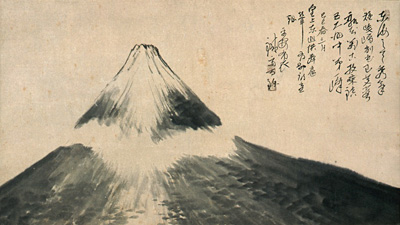Going to exhibitions is nice, and it makes me feel like I might even count as slightly cultured in the eyes of ignorant people. “Classical” art (eg up to the 20th century and the collapse of all classical concepts of beauty and art in general) is definitely worth seeing every time, but I felt that I was ignoring something important. After all I’m living in Japan, and while it’s natural that western art exhibitions would be advertised much more, there should be plenty of great local stuff too. That’s how I found the exhibition in memory of Tessai’s death’s 90th anniversary.
It’s traditional Japanese art at its best. Tessai had a huge love for the classics (in the Japanese sense), so of course most of his work are very heavily influenced by Chinese and old Japanese art. It’s an interesting contrast to the same age in western art, when things started falling apart, to a degree because of the influence of Japanese art. Tessai doesn’t seem like much of a revolutionary to me, but what he could accomplish with just paper and ink is quite impressive. It’s amusing how pointillist concepts can be clearly seen in some of his art, and it just feels natural, while in western art it has a whole different taste to it.
Some of the exhibition couldn’t catch my interests, but that’s simply because I’m not a fan of portraits, nor of Chinese wisdoms, and there was plenty of that. The landscapes though… That’s a beautiful world. The world of traditional Chinese atmosphere, a long, vertical alignment for most of them. Lush green mountains with paths crawling up on them, and teahouses hidden under the trees with noblemen enjoying the zen of nature. The execution is so different from western art landscapes, but it’s still clear that painters see the same beauties of nature regardless of culture.
The exhibition at the Idemitsu museum will be on until next Sunday (8/3), and it’s definitely worth checking out.

